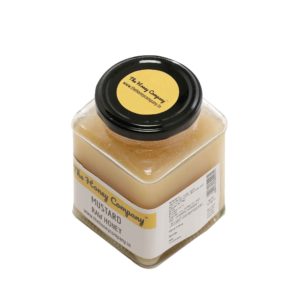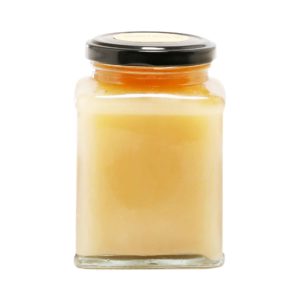 Crystallisation
Crystallisation
We have experienced our beautiful raw Mustard honey called ‘pure sugar’ and ‘rubbish’ by customers who don’t know raw honey and whose only experience has been honey that looks the same, tastes the same and never crystallises. We also know that this ignorance is due to years of consuming processed honey that is homogenised i.e., looks the same, tastes the same and rarely if ever alters. That translates to heated, filtered, blended honey with all kinds of honey and syrups.
Why Does Honey Crystallise?
- Glucose & Fructose Balance: Honey contains natural sugars like glucose and fructose. Glucose crystallizes, while fructose remains liquid. Honey with more glucose (like mustard honey) crystallises faster, and honey with more fructose (like acacia honey) takes time or needs really cold weather to crystallise.
- Temperature: Honey stored below 50°F (10°C) crystallizes more quickly.
- Pollen & Other Particles: Raw honey contains pollen which act as nucleation sites for crystals to form.
Is Crystallised Honey Safe?
Yes! Crystallisation does not affect honey’s taste or quality. In fact, Mustard crystallised honey often has a smoother texture and is easier to spread. And most of our customers consume it like a spread.
spread. And most of our customers consume it like a spread.
How to Decrystallise Honey
To return honey to liquid form:
- Place the jar in warm water (not boiling).
- Stir gently until crystals dissolve.
Another approach is to just whisk crystallised honey with a fork, it becomes smooth and creamy. Similar to whisking curd so the consistency becomes smooth. Great on toast or paratas.
Crystallisation is a sign of pure, raw honey—not spoilage. Processed honey takes a lot longer to crystallise or may not because it has been filtered and heated.
Customer question about an older jar of honey of another brand- “My honey has crystallised. Could they have added sugar syrup?”
Our Answer: Look for the word Raw on the label. If that is not mentioned then anything is possible. If Raw is mentioned then you can be sure that the crystallised honey is the real deal. In which case, please don’t throw away the hard work of the bees. 🙂
If you are interested you could check out our crystallised Mustard Raw Honey.
